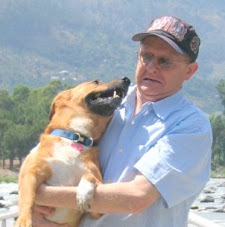While most heat pump repair jobs should be left to the professional, homeowners should know and understand some of the more common problems that can occur with these systems. If the unit is experiencing a simple problem, it may be possible to diagnose its cause and restore the HVAC system to operating order without a service call. However, with more complex problems, the best solution is to call for the help of a certified HVAC professional.
If it is in the winter and the system is not heating the home, the first place to begin the investigation is at the thermostat. The thermostat should be set to the heat setting and at a temperature above that or room temperature. With a digital thermostat, increase the temperature to about 2-4 degrees above the current temperature. This will ensure the unit is not depending on the electrical resistance backup source. The switch should also be set to a constant on for troubleshooting purposes.
When the system is set as instructed, the air handler fan motor should be working and air exiting the vents. If the fan has not started, the problem could be a tripped circuit breaker. If the problem is not there, it could be time to replace a thermostat or there may be problems in low voltage wiring or a fan relay switch.
If the air exiting the vents is cold, try increasing the thermostat to the point the emergency unit starts heating. This generally will happen when the temperature differential is 5 or more degrees. Allow a few minutes for warm air to reach the registers and check again. If the system continues blowing cold air, the problem is likely found in the system's outside unit.
Before heading outside, lower the setting to a couple of degrees above ambient temperatures. Give it a couple of minutes. Look for ice on the unit which could indicate a problem with the refrigerant levels or the defrost control.
At this point the fan on the outdoor unit should be running. However, in some locations, the devices have thermostats that prevent pumping cold air into a home. Otherwise, the problem could be in the wiring, run capacitors, or the fan motor.
A final check for the homeowner is to operate the system through its normal heating cycle. Air entering the room should be 15-20 degrees warmer than that that is leaving. A smaller temperature difference could indicate a problem and that the unit needs repairs.
While homeowners may be able to make simple repairs, such as replacing a thermostat for themselves, other heat pump repair should be left to a qualified HVAC technician. However, the occupant of a home can ensure the unit has the longest life by changing filters on a regular basis and scheduling preventative maintenance annually. Since these devices provide both heating and cooling, they are in operation most of the year. Preventative maintenance can ensure they provide the longest life.
If it is in the winter and the system is not heating the home, the first place to begin the investigation is at the thermostat. The thermostat should be set to the heat setting and at a temperature above that or room temperature. With a digital thermostat, increase the temperature to about 2-4 degrees above the current temperature. This will ensure the unit is not depending on the electrical resistance backup source. The switch should also be set to a constant on for troubleshooting purposes.
When the system is set as instructed, the air handler fan motor should be working and air exiting the vents. If the fan has not started, the problem could be a tripped circuit breaker. If the problem is not there, it could be time to replace a thermostat or there may be problems in low voltage wiring or a fan relay switch.
If the air exiting the vents is cold, try increasing the thermostat to the point the emergency unit starts heating. This generally will happen when the temperature differential is 5 or more degrees. Allow a few minutes for warm air to reach the registers and check again. If the system continues blowing cold air, the problem is likely found in the system's outside unit.
Before heading outside, lower the setting to a couple of degrees above ambient temperatures. Give it a couple of minutes. Look for ice on the unit which could indicate a problem with the refrigerant levels or the defrost control.
At this point the fan on the outdoor unit should be running. However, in some locations, the devices have thermostats that prevent pumping cold air into a home. Otherwise, the problem could be in the wiring, run capacitors, or the fan motor.
A final check for the homeowner is to operate the system through its normal heating cycle. Air entering the room should be 15-20 degrees warmer than that that is leaving. A smaller temperature difference could indicate a problem and that the unit needs repairs.
While homeowners may be able to make simple repairs, such as replacing a thermostat for themselves, other heat pump repair should be left to a qualified HVAC technician. However, the occupant of a home can ensure the unit has the longest life by changing filters on a regular basis and scheduling preventative maintenance annually. Since these devices provide both heating and cooling, they are in operation most of the year. Preventative maintenance can ensure they provide the longest life.
About the Author:
You can visit the website actionheatcool.com for more helpful information about What Consumers Should Know About Heat Pump Repair


No comments:
Post a Comment
Note: Only a member of this blog may post a comment.